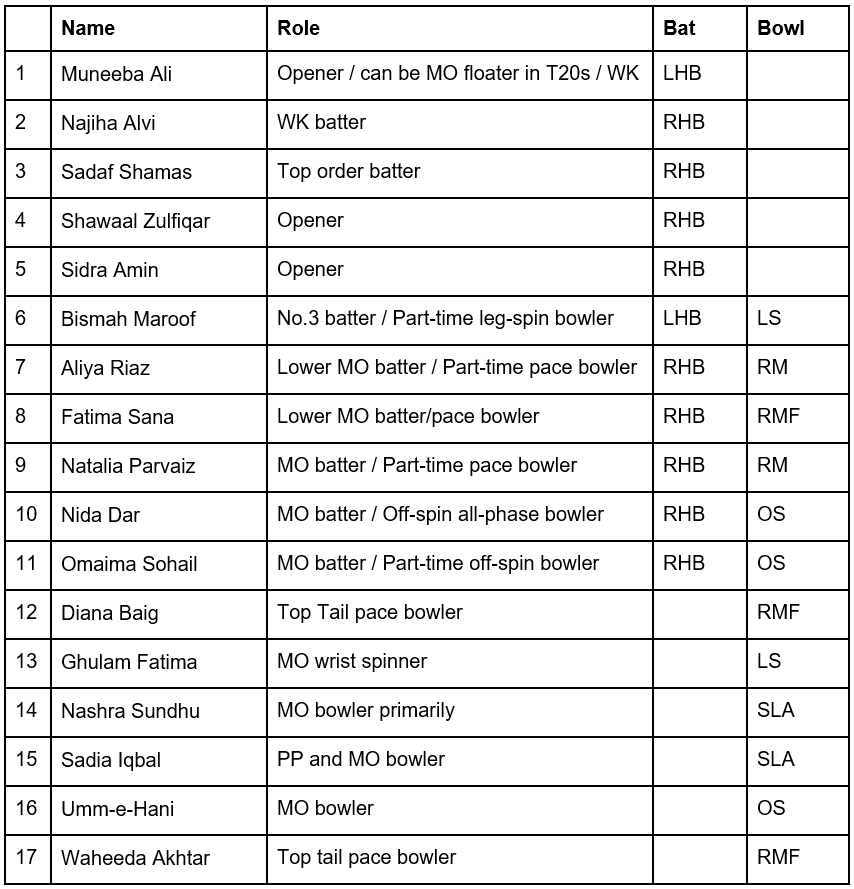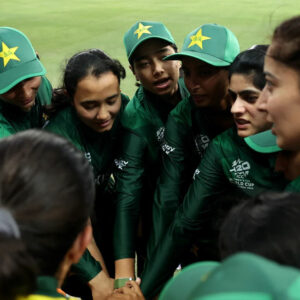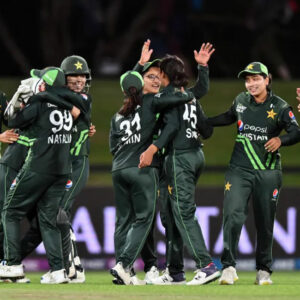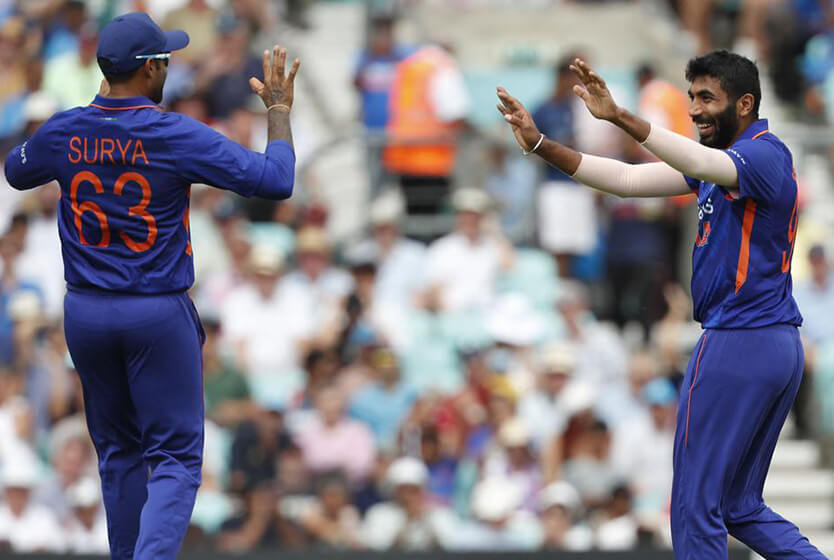
Pakistan Down Under: A Preview of Pakistan’s tour of New Zealand
It hasn’t been the easiest year for Pakistan women’s cricket, but after weeks of playing on slow and batting unfriendly pitches in Hangzhou and Bangladesh, the tour to New Zealand promises to be a refreshing change. With wickets that are hopefully more pace-friendly and the timely return of a fresh and fit Fatima Sana to the squad, this may well be a tour to remember.
Starting Sunday, December 3rd, Pakistan will play 3 T20Is and 3 ODIs versus a New Zealand side who will be eager to make up for their recent losses to Sri Lanka and South Africa away.
Meanwhile, we enter this series knowing three things:
1) We must learn from the poor outings at the Asian Games and in the Bangladesh series, but also remember that it’s a new day and a new series in new conditions.
2) New Zealand at home are a force to be reckoned with, even if other teams have bested them recently.
3) The conditions here are radically different from what we have been playing in, and we must adjust accordingly.
We’ve only ever played 1 T20I in New Zealand back in 2016, but thanks to the ODI World Cup early last year, we have 12 ODIs worth of experience in these conditions, with 10 players of the 17 selected having played here. In conversation with Grassroots Cricket, Fatima Sana confirmed that as most of the squad was familiar with New Zealand’s conditions, they were curating training sessions and their bowling and batting strategies based on their experience.
In the pre-series camp, there was particular attention paid to batting versus pace, and Natalia and Aliya were often found with ball in hand, practicing their pace bowling for when the team may need them. Interim head coach Mauhtashim Rashid, when speaking to PCB Digital, noted that, above all, this tour offers “valuable experience” and will be instrumental for young players to prove their worth in light of the international tournaments to come. The camp, too, had younger players at the forefront. This is good news for Pakistan, with Nida, Bismah, and perhaps even Aliya’s careers nearing their last few years. It means the think tank is keenly observing our youngsters, putting them in the spotlight, and planning for the future. Now, what this approach could mean for our playing XIs on this tour remains to be seen.
This trip marks the last series for the senior team before an extended break from international cricket – a break which will hopefully be interrupted by 50-over and T20 domestic tournaments and more Women’s T20 League exhibition matches. After a largely disappointing year of 5 wins and 9 losses in T20Is and 2 wins and 7 losses in ODIs, Pakistan will want to close out the year on a high, trouble New Zealand like they did South Africa, and get some important ICC Women’s Championship points for themselves in the ODIs.
Squad
Probable XI (T20Is)
- Sidra Amin
- Muneeba Ali
- Bismah Maroof
- Nida Dar ©
- Natalia Parvaiz
- Aliya Riaz
- Fatima Sana
- Najiha Alvi (wk)
- Diana Baig
- Nashra Sundhu
- Sadia Iqbal / Umm-e-Hani
Probable XI (ODIs)
- Sidra Amin
- Muneeba Ali
- Bismah Maroof
- Nida Dar ©
- Aliya Riaz
- Fatima Sana
- Najiha Alvi (wk)
- Diana Baig
- Nashra Sundhu
- Ghulam Fatima
- Sadia Iqbal / Umm-e-Hani
Notable Points
About our bowling…
The squad listed above includes the following (genuine) pace options:
- Fatima Sana
- Diana Baig
- Waheeda Akhtar
- Natalia Pervaiz
- Aliya Riaz
Spin options:
- Nida Dar
- Nashra Sundhu
- Sadia Iqbal
- Umm-e-Hani
- Ghulam Fatima
- Omaima Sohail
With 3 primary pacers and 2 part-timers, the list of 5 pace options is more than what we’ve fielded for any tour or tournament in the last few years, including those held in Australia, South Africa, England, and New Zealand. Fatima and Diana are most likely to be our first-choice pacers, though Waheeda has impressed lately, while Aliya and Natalia may act as 3rd and 4th pace options.
Now, ours is a team that relies heavily on spinners to open the bowling (typically Sadia and Nida) and then again to save or seal the game in the middle, which Nashra often does. In fact, in 11 of our last 14 matches, we’ve gone in with just 1 main pacer and 4 or 5 main spinners. Fatima’s absence for 8 of these matches and the conditions we played in may have had something to do with that, but with Waheeda Akhtar in the squad, there was no shortage of pace options. Even when we could easily play more pacers, such as versus South Africa at home, we chose not to.
Our reliance on spin cannot be understated. Since 2020, our powerplay bowling in T20Is includes an average of 3 overs of spin out of a total 6. Overall, in the same format, we have bowled more than twice as many overs of spin than pace in this period. In contrast, T20Is played in New Zealand since 2020 have seen teams bowl less than 2 overs of spin in the powerplay at an average, and overall, have seen roughly 25% more overs of pace bowled than spin. The trends are similar in ODIs, too: where Pakistan has bowled twice as many overs of spin versus pace, teams in New Zealand have been bowling roughly 14% more pace than spin.
Though this means we’re out of our comfort zone in New Zealand, the five pace options in the squad indicate that the team management has recognized the need for a change in strategy in these conditions and is making deliberate, concerted efforts to adapt the side accordingly. Not only is it great to have Fatima Sana back in the fold and now injury-free as a bowler who can thrive in these conditions, but this many pace options suggest that Pakistan can be expected to field at least 3 of them each game – 4 if they trust Natalia Parvaiz to take the field.
About our batting…
Pakistan is not a side known for their explosive T20 batting or even for their measured ODI batting. Unfortunately, we are a side that most often relies on individual brilliance and lone warrior knocks by any one of our top 6 to bring us close to wins or carry us over the line.
With Muneeba in possibly the best T20 form of her life and Sidra continuing to excel in ODIs, these two batters can be expected to do well in the formats they’re best suited to, which hopefully should carry onto the other format as well. Of course, Pakistan’s best batters in SENA in the last 2 decades, our resident no. 3 and 4, Bismah Maroof and Nida Dar, are in the squad as well. While they both aren’t having the best year with the bat (Bismah Maroof, 36.6/97.9 in T20Is and 21.5/53.9 in ODIs; Nida Dar, 14.5/94.6 in T20Is and 28.3/67.4 in ODIs), Pakistan will need these 2 to step up, and with their previous success in SENA, I wouldn’t be surprised if they do.
Aliya Riaz, too, whose primary skill set is best suited to these conditions, should be trusted to do well. Young Fatima Sana, as I’ll explain later on, is likely to find success on this tour as well. With her in the mix and Diana Baig, Najiha Alvi, and Umm-e-Hani recently showing that they’re more than capable tailenders and can, on their day, out-bat even our primary batters, Pakistan can perhaps do well and put up scores to be proud of even versus New Zealand’s terrifying bowling attack — assuming that we adjust to the conditions at the earliest.
The return of Shawaal Zulifqar and the question of Pakistan’s opening pair (again)
This is young Shawaal’s first overseas series. After her struggle in the Asian Games and nervy performances versus South Africa at home, the teenager was sent to represent the A-team in their home series featuring West Indies A and Thailand. Now, she returns to the senior side on the back of match-winning performances in the tri-series, a POTS award, and a surge of confidence in her abilities. Still, while she is a promising prospect, it seems unlikely that management will push Shawaal into the lion’s den (again) and have her open in either format.
Shawaal is young and still developing as a batter, and New Zealand’s conditions offer a challenge that she may not be ready to take up – nor should she have to, with Muneeba Ali in the squad. Muneeba, who is widely considered a natural fit in the top order, is far more likely to open with Sidra Amin, who has a history of success in New Zealand, while Najiha Alvi keeps and bats down the order.
To play Shawaal, though, we’d probably have to shift Muneeba to the middle again and have her keep as well. I don’t think we’ll be seeing this particular scenario play out, especially if all goes well with Muneeba and Sidra, but Nida and her think tank have surprised us before with their choice of openers, so we’ll have to wait and see.
The return of Omaima Sohail: Does she walk into the side?
The next player returning to the side is Omaima Sohail. For much of the last few years, Omaima has been a series regular for our senior side. She is a player who has played at every position in our batting lineup from 1 to 7 in T20Is and primarily as a middle-order batter in ODIs, but has never really lived up to her potential. As a batting allrounder, she was sometimes asked to bowl, but with several spin options in the squad, she was never quite relied on for this.
Despite refreshingly good intent with the bat and age on her side, Omaima’s inconsistent performances and rather consistent struggles with both bat and ball meant she has been in danger of being stuck with the label of a “bits and pieces cricketer.” She was dropped from the side for the Bangladesh series and sent instead to find some form with the A team versus Thailand and West Indies A. Fortunately for her and perhaps for Pakistan too, she shone with both bat and ball, particularly in the T20Is, securing 3 POTMs in her 8 matches, including one in the tri-series final.
Omaima returns after a brief break from the side as an upper-middle-order batter and an additional bowling option. Of course, her off-spin is unlikely to be used much in these conditions down under, but she may well be played at 4 in ODIs with Nida, Aliya, and Fatima all moving one spot down. In T20Is, we may try to utilize Omaima in the lower middle order, which is something we tried earlier this year in Australia.
However, if it comes down to choosing between Natalia Parvaiz and Omaima Sohail in both formats this tour, I’d argue Natalia should start over Omaima — if not for her batting, then for her part-time pace bowling. In recent outings with the bat, which are hard to come by for Natalia, she has shown impressive control, placement, and power with her shots, particularly when we sent her to close out the innings. This is one player who I’d like to see more of, particularly with the upcoming T20 World Cup in mind and our lack of middle-order options. Still, Omaima’s renewed form may mean she’s preferred over Natalia, but you know where I stand on this.
The return of Fatima Sana and her importance in the XI
Third on this list of returning players is Fatima Sana, whose good form and all-round performance could very well be the difference for Pakistan. After a stunning show with the bat in 1 of the 2 opportunities she got and a disappointing performance with the ball throughout the series versus South Africa, all eyes should and likely will be on her as she takes the field after 2.5 months of rehab and rest.
There have been concerns about her form in recent months, and rightfully so. She’s taken 18 wickets in 22 T20s this year, going at 7.85 RPO in her 72.2 overs and wicketless in 10 games. In the 4 ODIs she’s played this year, she’s only bowled 23 overs, going at 5.17 RPO and taking all 3 of her wickets in 1 game. Indeed, Fatima’s performances with the bat have been far more awe-inspiring in the few recent opportunities she’s had. She is currently one of our best batters versus pace, averaging 23.0 with 135.3 SR in T20Is and 29.4 average, 77.8 SR in ODIs, and some would argue that she’s not even a fully-fledged batter yet – though I’d disagree with that assertion.
Here in New Zealand, the team will likely be facing and bowling a lot of pace bowling. This makes Fatima practically undroppable, and in fact, Pakistan will need her to do well with both ball and bat in hand. Granted, her lines and control have been a massive concern for the team, particularly in the powerplay, but Pakistan have turned to Diana and Sadia in recent times to open our bowling innings, which means Fatima could perhaps bowl 1st change, which is likely to be the role she will take on next year at the T20 World Cup.
Despite her less-than-ideal numbers this year, there should be no question of whether Fatima Sana should play the series or not. She must play. In just the last year or so, she has struggled with numerous injuries, which certainly didn’t help her form, but now that she is well-rested and fully fit, the team should back their 3D player to the fullest. If her bowling form continues to dip, they can perhaps drop a spinner or an MO bat for Waheeda and have Fatima act as the third pacer and primarily as a batter, which is a pretty good idea, especially if they want to manage her workload.
No matter what, though, Fatima Sana must play. The future of Pakistan, at the risk of being a bit too dramatic, depends on it.
Schedule
Sunday, 3 Dec – 1st T20I, Dunedin (1 pm local time; 5 am PK time)
Tuesday, 5 Dec – 2nd T20I, Dunedin (1 pm local time; 5 am PK time)
Saturday, 9 Dec – 3rd T20I, Queenstown (1 pm local time; 5 am PK time)
Tuesday, December 12th – 1st ODI, Queenstown (11 am local time; 3 am PK time)
Friday, December 15th – 2nd ODI, Christchurch (2 pm local time; 6 am PK time)
Monday, December 18th – 3rd ODI, Christchurch (2 pm local time; 6 am PK time)
Data and stats via cricmetric.com.








Leave a Reply